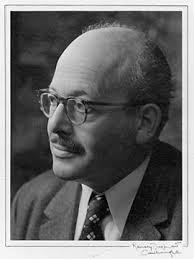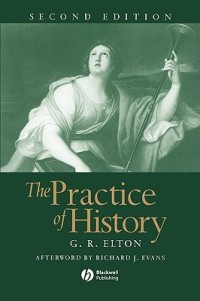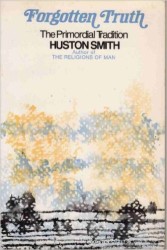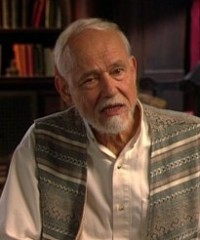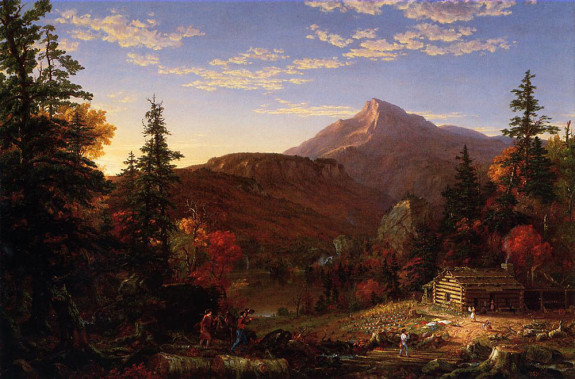
In this second article, on the same general theme as Belief and Disbelief , material is based largely upon G R Elton’s The Practice of History, and Huston Smith’s Forgotten Truth: The Primordial Tradition. Brief biographical information is at the conclusion.
“The study of History amounts to the search for the truth”
Today it is almost taken for granted that man cannot be certain what is truth. Why so? Modern criticism has proposed that the way the historian treats his material renders it a matter of personal interpretation, or subjective opinion, and this at first is a reasonable stance, for are not eyewitness accounts, so valuable to historians, subject to the same limitations of humans at all times and places? Combined with the inability to be in command of every fact relevant to the subject effectively means for most people, “all things are relative”. Such a view displays ignorance of the difference between an inability to know all the truth as opposed to a total inability to know or recognize the truth. This can be illustrated. A man is killed by a mob in 1850. That is a fact, an event that took place and that cannot be altered. In the truest sense it is quite immaterial whether a historian or his readers know the event, analyse it, or use it to shed light on Victorian Britain. If no evidence had survived of the event, it may not have been recorded as historical, but it would still, of course, have occurred. However, this event, along with every recorded fact of history, can be known, and usefully placed in a scheme or body of knowledge for our instruction. Thus interpretation, while useful, indeed essential, has no correlation with the facts of history. So, ultimately, history is what actually happened, and we will never know the full story of each event, but to understand history, that is, to discover the truth, we do not need to. Historical interpretation, judgement, ‘bringing the past to life’ are thoroughly legitimate, and helpful activities, but should be clearly distinguished from the independent reality of the described events .
“History is written by the victors”
A well-known phrase perhaps; and it is obvious that to set up a stand in the vanity fair of opinion and sell objective judgement where all the peddlers are paying lip-service to the same values whilst profitably passing off the goods the audience demands, is no mean task.
Dehatkadons, a chief of the Onondaga Iroquois, once said: ‘’ You cannot discover an inhabited land. Otherwise, I could cross the Atlantic and discover England’’ In one sentence he renders as myth the oft-taught, “In 1492, Columbus discovered America”.
Traditionally men honoured their ancestors as being essentially wiser than themselves as they were closer to the source of things. Now our forefathers have come to be regarded as unsophisticated, immature, their beliefs little more than wish-fulfilment, as if a security blanket to compensate for life’s hardships. Alternatively, their convictions were compared to a sedative invented by the privileged to quieten those who might otherwise press for their fair share of the world’s limited resources. In reviewing this process, that is, the new evicting the old, the dawn of a so-called brighter day, we may turn to the Native Americans. Particularly in the nineteenth century, they watched as their familiar landscape was dismantled, a landscape of almost magical richness. To them, the very grains of sand were beads in the garment of their Great Spirit; the trees, temple pillars, the earth sacred to be trodden upon save by soft skin moccasins. Across this unparalleled expanse of nature poured hordes of men so strange it was as if they were not men at all. These looked upon all creation as material for exploitation, everything expendable; men as labour, trees as timber, deer as meat, and mountains as quarries or goldmines.
John Collier, a former US Commissioner of Indian Affairs , once described “the victims of this ‘civilizing mission’ as the victors chose to call it, experienced a sadness deeper than imagination can hold, the sadness of men completely conscious, watching their universe being destroyed by a numberless and scorning foe. They had what the world has lost.. The ancient reverence and passion for human personality joined with the ancient reverence and passion for the earth and the entire web of life”. He emphasizes the quality of sadness rather than anger in the people’s response. Inasmuch as all humanity is one, the element of pity is there for us all.
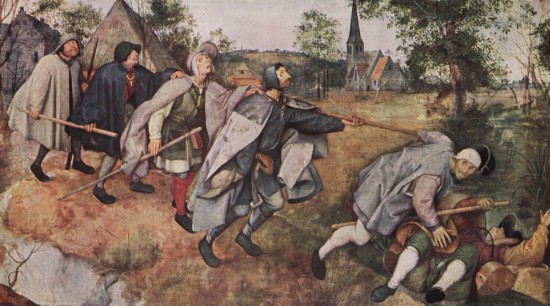
In any case, the parallel is clear when we think of the destruction of the traditional world-view that at first appears synonymous with the advance of science and technology.
The question was this: Was it modern science that reduced the basis of our thinking to the purely physical, instant gratification of our wants and exploitation of the material world within reach, whatever the true costs? Could it be that the spectacular success of scientists, from the mid eighteenth century onward, led to the popular, but erroneous conclusion that nothing outside the world as revealed and explained by science, really exists?
Clearly, like many things, science has two sides. If one exclusively relies upon current technology and thinking to illuminate reality, the consequence is not science but scientism and materialism. On the other hand, if one begins with a caution, that technology is essentially imperfect, limited, one then has the freedom to look beyond the current ‘givens’ for what is less obvious, even potentially within reach.
Science and tradition agree that the way things really are is radically different from the way they seem, outstripping anything everyday experience might suspect. As humans, we live in a middle kingdom, with a micro-kingdom within and a macro-kingdom without. Our own senses can only detect our own dominion, and imperfectly at that. Science has outstripped in every way, size and number, our ability to imagine its findings. Light is the standard example. Is it a wave or a particle? Some experiments describe it in the one form, others like the other. But waves and particles are different kinds of things. A particle has an entity like a stone; waves are like the ripples the stone makes when dropped in water. The experiments suggest it is both, but perhaps it is something else again? It seems we may never be able to visualize it, for example, the speed of light, famously shown by Einstein to be constant, nonetheless when it moves in opposite directions, for example as from starlight, the relative speed of one particle to the other is no faster than the speed of light.
Robert H. March in Physics for Poets, put it like this: “The normal reaction to a first exposure to relativity is: “I think I understand it, I just don’t believe it.” The rule of the game is to accept the consequences of the postulate (an assumption about the existence, fact, or truth of (something) as a basis for reasoning, discussion, or belief) no matter how weird. We must never ask how it can be so, we accept that it must be so, and see if any of the strange things implied actually contradicts our experience. The student is implored to have faith, in the hope that all will turn out self-consistent in the end.”
Thanks to:
G.R. Elton (1921- 1994) A strong advocate of the primacy of political and administrative history, a Cambridge historian of formidable erudition and emphatic views. Elton was the pre-eminent Tudor historian of his day. He also made very significant contributions to the then current debate on the philosophy of historical practice, as well as having a powerful effect on the profession through, among other things, his presidency of the Royal Historical Society.
Huston Cummings Smith (born May 31, 1919) is a religious studies scholar in the United States. His book The World’s Religions has sold over two million copies, and remains a popular introduction to comparative religion.
Image by Thomas Cole: The Hunter’s return (1845) Carter Museum of American Art
